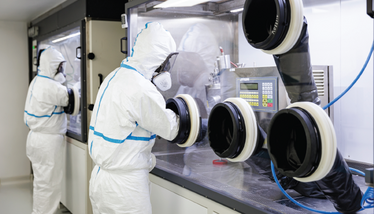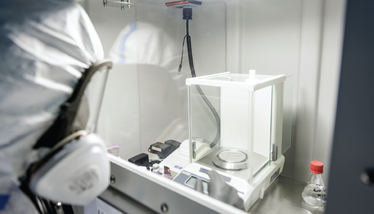Handling High Potency
How to mitigate the risks involved in highly potent APIs
Konstantinos Apostolou | | 2 min read | Opinion

Konstantinos Apostolou
Highly potent active pharmaceutical ingredients (HPAPIs) have shown significant promise in treating various disease indications, particularly cancer. However, their toxicity presents obvious challenges and operator exposure can have serious health consequences. With around 30 percent of drugs in the development pipeline classed as HPAPIs, specialized facilities, containment measures and personal protective equipment (PPE) are crucial.
However, the lack of standardization in HPAPI classification and containment across the industry makes implementing effective safety measures and strategies difficult. There is no benchmark definition for HPAPIs across the industry, resulting in variations in HPAPI identification, classification, and management.

A comprehensive HPAPI analysis is critical to determine the appropriate containment solution. The most widely employed approach across the industry is for organizations to implement a control banding strategy that categorizes APIs based on occupational exposure limits (OEL).
A thorough assessment of an HPAPI’s potency and toxicity helps informs the OEL and establishes occupational exposure banding (OEB). With OEB, the HPAPI is assigned into a band depending on the risk to human health. Appropriate engineering controls (including containment equipment and ventilation systems), administrative protocols (operator best practices, training etc), and PPE can then be introduced.
Toxicological approaches based on bibliographic and in silico evaluation can more accurately represent associated toxicity risks for an HPAPI, leading to more meaningful categorization. Currently, the lack of harmonization across the regulatory landscape concerning HPAPIs demands continuous reassessment of employed strategies to ensure approaches remain robust and effective throughout the product lifetime. To safeguard the efficiency of containment strategies, drug developers should introduce environmental monitoring methods to evaluate whether airborne particles remain within the threshold of the OEL. In addition, risks can be further reduced through accurate hazard assessment from the early stages of development, implementing a risk mitigation strategy at the earliest point. Therefore, safety measures can be preemptively introduced to ensure safety, reduce delays, and minimize costs that could hinder the transition to the next development phase. As part of this, detailed standard operating procedures for the safe handling, storage, and disposal of HPAPIs can be developed. All safety considerations must be systematically addressed, right through from small scale research to commercial manufacturing.

Ensuring the safety and quality of HPAPIs is often associated with high costs because of the specialized facilities and containment measures that are required, as well as extensive QC testing. Companies must strike a balance between investing in measures that ensure the quality and safety of their products while also considering the cost implications. This can involve exploring innovative manufacturing technologies, optimizing quality control processes, and seeking collaborations with CDMOs that already have these capabilities in-house.
Looking ahead, the HPAPI landscape will continue to evolve, driven by trends such as increasing attention around antibody drug conjugates and sophisticated drug delivery systems, such as nanoparticles, liposomes, and micelles, that combine high potency with targeted delivery to maximize the efficacy of the treatment.
The safe and efficient development and manufacturing of HPAPI products hinges on addressing safety considerations from early development to de-risk production and implementing OEB strategies. By prioritizing safety throughout the product life cycle, pharmaceutical companies can ensure compliance with regulatory standards, resulting in the delivery of high-quality HPAPI products to the market and improving patient outcomes.
R&D Senior Manager at Adragos Pharma



















